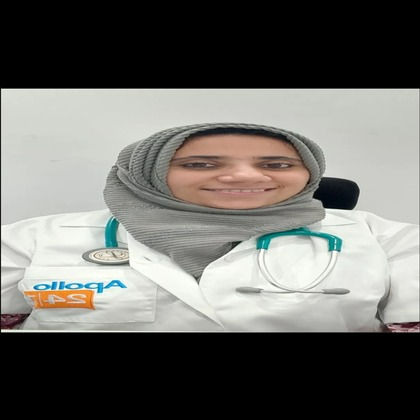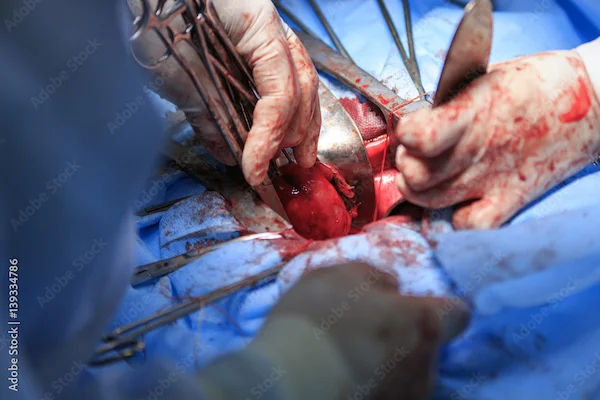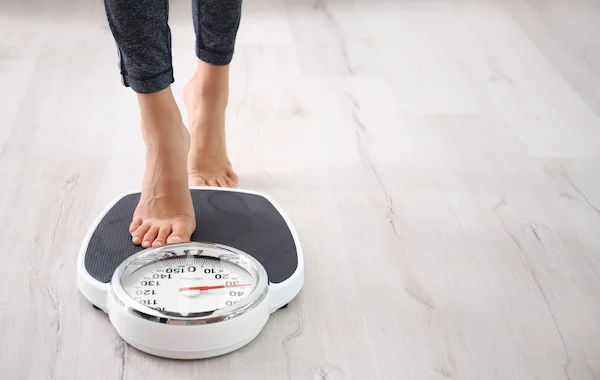When Is A Hysterectomy Needed For Uterine Fibroids?
Discover when a hysterectomy is recommended for uterine fibroids, including symptoms, treatment options, and factors influencing the decision for surgical removal of the uterus.

Written by Dr.Sonia Bhatt
Last updated on 4th Jul, 2025

Introduction
Uterine fibroids are non-cancerous growths that develop in or around the uterus. While many women with fibroids experience no symptoms, others may face severe discomfort, heavy bleeding, or complications that affect their quality of life. In some cases, a hysterectomy—the surgical removal of the uterus—may be recommended as a treatment option.
If you or someone you know is dealing with fibroids, this article will help you understand when a hysterectomy might be necessary, its benefits, risks, and alternative treatments.
Understanding Uterine Fibroids
Fibroids are common, affecting up to 70-80% of women by age 50. They vary in size—from tiny, undetectable nodules to large masses that can distort the uterus. While the exact cause is unknown, factors like hormones (estrogen and progesterone), genetics, and lifestyle may contribute to their growth.
Common Symptoms of Fibroids
Heavy or prolonged menstrual bleeding
Pelvic pain or pressure
Frequent urination (due to pressure on the bladder)
Constipation or bloating
Lower back pain
Pain during intercourse
Infertility or pregnancy complications (in rare cases)
Not all fibroids require treatment, but if symptoms interfere with daily life, medical intervention may be needed.
When Is a Hysterectomy Considered?
A hysterectomy is a permanent solution for fibroids, as it removes the uterus (and sometimes the cervix). It is usually recommended when:
1. Symptoms Are Severe and Unmanageable
If heavy bleeding leads to anaemia (low red blood cells) despite medication.
If fibroids cause chronic pain that doesn’t improve with other treatments.
2. Fibroids Are Very Large
Large fibroids may press on other organs (bladder, rectum), causing discomfort.
If they distort the uterus, leading to complications in pregnancy.
3. Other Treatments Have Failed
If medications, myomectomy (fibroid removal without removing the uterus), or uterine artery embolisation (UAE) do not provide relief.
To Know When A Hysterectomy Is Needed, Consult Top Specialists
4. No Future Pregnancy Plans
Since a hysterectomy removes the uterus, pregnancy is no longer possible. Women who have completed their pregnancy plan may opt for this permanent solution.
5. Cancer Risk (Rare Cases)
If there’s a suspicion of uterine cancer (though fibroids themselves are benign).
Types of Hysterectomy
Depending on the severity and the patient’s needs, doctors may recommend:
1. Total Hysterectomy: Removes the uterus and cervix.
2. Supracervical (Partial) Hysterectomy: Removes only the upper part of the uterus, leaving the cervix.
3. Radical Hysterectomy: Removes the uterus, cervix, and surrounding tissues (rarely needed for fibroids).
The surgery can be performed through:
Abdominal incision (traditional open surgery)
Laparoscopy (minimally invasive)
Vaginal hysterectomy (least invasive)
Benefits of Hysterectomy for Fibroids
Here are some key benefits of a hysterectomy for fibroids, offering effective relief from symptoms and improving the quality of life for many women:
Permanent relief from fibroid symptoms.
No risk of fibroid recurrence (since the uterus is removed).
Eliminates heavy bleeding, reducing anaemia risk.
Improves the quality of life for women with severe symptoms.
Risks and Considerations
While hysterectomy is effective, it’s a major surgery with potential risks:
Surgical complications (infection, bleeding, blood clots).
Early menopause (if ovaries are removed).
Emotional impact (some women feel grief over losing fertility).
Long recovery time (4-6 weeks for full recovery).
Are There Alternatives to Hysterectomy?
Yes! If you wish to preserve fertility or avoid surgery, consider:
1. Medications
Hormonal therapy (birth control pills, GnRH agonists) to shrink fibroids.
Tranexamic acid to reduce heavy bleeding.
2. Minimally Invasive Procedures
Myomectomy: Removes fibroids while keeping the uterus intact.
Uterine Artery Embolisation (UAE): Blocks blood supply to shrink fibroids.
MRI-guided Focused Ultrasound (MRgFUS): Uses ultrasound waves to destroy fibroids.
3. Lifestyle Changes
Diet: Eat iron-rich foods (spinach, lentils) to combat anaemia.
Exercise: Helps manage weight, which may reduce fibroid growth.
Stress management: Yoga and meditation may help with symptoms.
When to See a Doctor?
If you experience:
Extremely heavy periods with clots.
Pelvic pain that disrupts daily life.
Frequent urination or constipation due to fibroids.
Consult a gynaecologist to discuss the best treatment for you.
Conclusion
A hysterectomy can be a life-changing solution for women suffering from severe fibroid symptoms. However, it’s a major decision, so discussing all options with your doctor is essential.
If you’re considering treatment for fibroids, Apollo 24|7 offers expert consultations and diagnostic services. You can book an appointment online to explore the best care options tailored to your needs.
Consult Top Specialists
To Know When A Hysterectomy Is Needed, Consult Top Specialists

Dr. Sanjan Das
Obstetrician and Gynaecologist
15 Years • MBBS,MS
Bengaluru
Apollo Clinic, Sarjapur Road, Bengaluru

Dr. Sreeparna Roy
Obstetrician and Gynaecologist
8 Years • MBBS , MS (OBSTETRICS & GYNAECOLOGY), Fellowship in Infertility, Endoscopy & Ultrasonography), Fellowship in Laparoscopy & Hysteroscopy,DRM
Barasat
Diab-Eat-Ease, Barasat

Dr. Rituparna De
Obstetrician and Gynaecologist
6 Years • MBBS, MS (Obstetrics & Gynaecology)
Kolkata
MCR SUPER SPECIALITY POLY CLINIC & PATHOLOGY, Kolkata

Dr. Mehnaz Rashid
Obstetrician and Gynaecologist
7 Years • MBBS, DNB (Obstetrics & Gynaecology), D.MAS, F.MAS, WALS
Bengaluru
Wellstar Polyclinic and Diagnostic Center, Bengaluru
(225+ Patients)

Dr. Sreeparna Roy
Obstetrician and Gynaecologist
8 Years • MBBS , MS (OBSTETRICS & GYNAECOLOGY), Fellowship in Infertility, Endoscopy & Ultrasonography), Fellowship in Laparoscopy & Hysteroscopy,DRM
Kolkata
Dr Utsa Basu Clinic, Kolkata
Consult Top Specialists

Dr. Sanjan Das
Obstetrician and Gynaecologist
15 Years • MBBS,MS
Bengaluru
Apollo Clinic, Sarjapur Road, Bengaluru

Dr. Sreeparna Roy
Obstetrician and Gynaecologist
8 Years • MBBS , MS (OBSTETRICS & GYNAECOLOGY), Fellowship in Infertility, Endoscopy & Ultrasonography), Fellowship in Laparoscopy & Hysteroscopy,DRM
Barasat
Diab-Eat-Ease, Barasat

Dr. Rituparna De
Obstetrician and Gynaecologist
6 Years • MBBS, MS (Obstetrics & Gynaecology)
Kolkata
MCR SUPER SPECIALITY POLY CLINIC & PATHOLOGY, Kolkata

Dr. Mehnaz Rashid
Obstetrician and Gynaecologist
7 Years • MBBS, DNB (Obstetrics & Gynaecology), D.MAS, F.MAS, WALS
Bengaluru
Wellstar Polyclinic and Diagnostic Center, Bengaluru
(225+ Patients)

Dr. Sreeparna Roy
Obstetrician and Gynaecologist
8 Years • MBBS , MS (OBSTETRICS & GYNAECOLOGY), Fellowship in Infertility, Endoscopy & Ultrasonography), Fellowship in Laparoscopy & Hysteroscopy,DRM
Kolkata
Dr Utsa Basu Clinic, Kolkata




